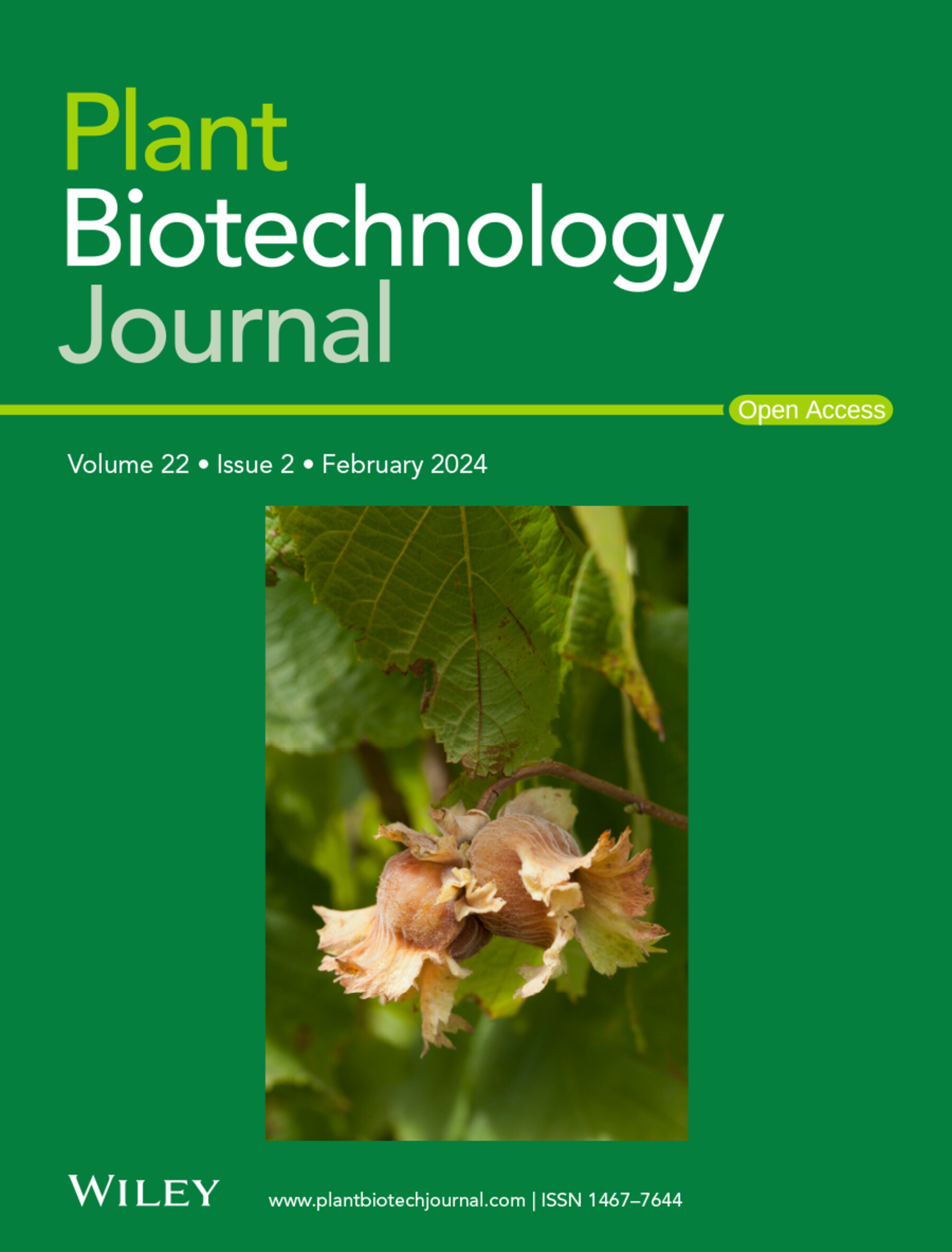Precision RNAi in Tomato Using Synthetic Trans‐Acting Small Interfering RNAs Derived From Minimal Precursors
IF 10.5
1区 生物学
Q1 BIOTECHNOLOGY & APPLIED MICROBIOLOGY
引用次数: 0
Abstract
RNA interference (RNAi) is a highly conserved gene silencing mechanism regulating gene expression at transcriptional and post‐transcriptional levels in plants. Synthetic trans‐acting small interfering RNAs (syn‐tasiRNAs) have emerged as powerful tools for highly specific and efficient gene silencing. However, their application in crops has been constrained by the need for transgene integration and the relatively long length of利用源自最小前体的合成反式作用小干扰rna在番茄中的精确RNAi
RNA干扰(RNAi)是一种高度保守的基因沉默机制,在植物的转录和转录后水平上调控基因表达。合成反式作用小干扰rna (syn - tasiRNAs)已成为高度特异性和高效基因沉默的有力工具。然而,它们在作物中的应用受到转基因整合的需要和相对较长的TAS衍生前体的限制。在这里,我们基于内源性SlmiR482b microRNA靶向的最小前体,开发了一种新的同步- tasiRNA平台。这些最小的前体,仅包括一个22 - nt的miRNA靶位点,一个11 - nt的间隔区和syn - tasiRNA序列,在转基因和瞬时病毒诱导的基因沉默(syn - tasiR - VIGS)系统中有效地产生功能性的syn - tasiRNA。为了促进其更广泛的应用,我们从番茄中基于SlmiR482b的最小前体中设计了一系列高通量克隆和高效表达syn - tasiRNA的载体。我们的研究结果表明,最小的前体诱导了内源番茄基因的强大基因沉默,并赋予了对经济上重要的番茄斑点枯萎病毒的抗病毒抗性。此外,我们发现syn - tasiR - VIGS可以通过粗提取物以无转基因的方式应用,从而有效地沉默内源基因。本研究建立了最小syn - tasiRNA前体作为番茄精确RNAi的多功能和高效工具,在功能基因组学和作物改良中具有应用价值。
本文章由计算机程序翻译,如有差异,请以英文原文为准。
求助全文
约1分钟内获得全文
求助全文
来源期刊

Plant Biotechnology Journal
生物-生物工程与应用微生物
CiteScore
20.50
自引率
2.90%
发文量
201
审稿时长
1 months
期刊介绍:
Plant Biotechnology Journal aspires to publish original research and insightful reviews of high impact, authored by prominent researchers in applied plant science. The journal places a special emphasis on molecular plant sciences and their practical applications through plant biotechnology. Our goal is to establish a platform for showcasing significant advances in the field, encompassing curiosity-driven studies with potential applications, strategic research in plant biotechnology, scientific analysis of crucial issues for the beneficial utilization of plant sciences, and assessments of the performance of plant biotechnology products in practical applications.
 求助内容:
求助内容: 应助结果提醒方式:
应助结果提醒方式:


